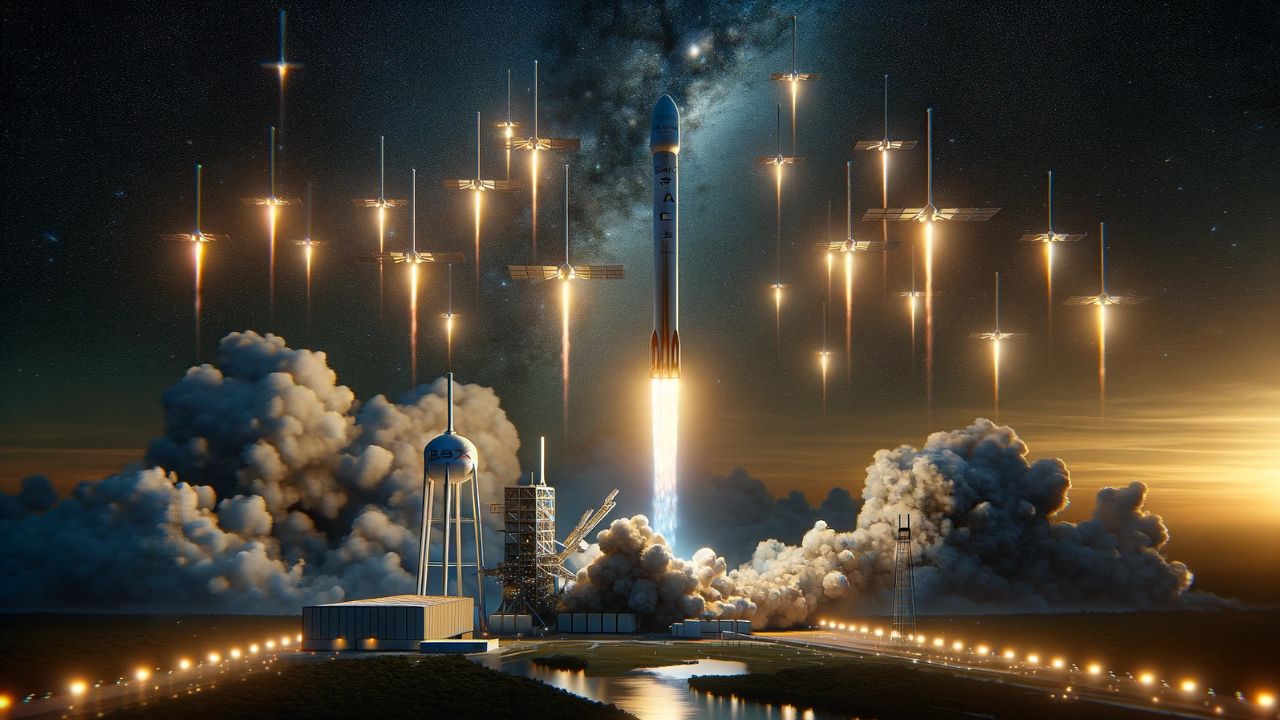SpaceX, Starlink satellites, Falcon 9 launch, global internet, satellite constellation, space technology, low Earth orbit, broadband coverage, reusable rocket, SpaceX mission
Discover the details of SpaceX’s latest achievement: launching 23 Starlink satellites from Florida using the Falcon 9 rocket. This mission advances the goal of providing high-speed global internet coverage, showcasing the innovations in space technology and satellite deployment. Learn how this launch contributes to SpaceX’s vision for worldwide broadband access and the future of global connectivity.

SpaceX continues to make headlines in the aerospace industry with its latest achievement: the successful launch of 23 Starlink satellites from Florida. This event marks another significant milestone in SpaceX’s ambitious project to provide global broadband internet coverage through its ever-expanding satellite constellation.
Launch Overview
The launch took place at the Kennedy Space Center in Florida, utilizing one of SpaceX’s workhorse Falcon 9 rockets. The precision and reliability of the Falcon 9 have been well-documented, and this mission was no exception. It lifted off smoothly, piercing the sky with a trail of fire and smoke, and embarked on its journey to deploy the satellites into orbit.
Mission Objectives
The primary objective of this launch was to add 23 more satellites to the Starlink constellation, which aims to provide high-speed internet connectivity across the globe. This mission is part of SpaceX’s broader vision to bridge the digital divide, especially in remote and underserved areas where traditional internet infrastructure is lacking or non-existent.
The Starlink Project
Starlink is a satellite internet constellation being constructed by SpaceX to provide satellite Internet access. The constellation will consist of thousands of mass-produced small satellites in low Earth orbit (LEO), working in combination with ground transceivers. SpaceX intends to sell some of the satellites for military, scientific, or exploratory purposes.
Launch Details
The Falcon 9 rocket’s first stage executed its task flawlessly, propelling the payload towards its designated orbit. After its job was done, the first stage separated and returned to Earth, landing on the drone ship “Of Course I Still Love You” stationed in the Atlantic Ocean. This reusable rocket technology is a cornerstone of SpaceX’s strategy to reduce launch costs and increase access to space.
Satellite Deployment
The second stage of the Falcon 9 continued the journey, carrying the 23 Starlink satellites. Once at the correct altitude, the satellites were successfully deployed into their intended orbit. This deployment process is critical, as it sets the stage for the satellites to eventually maneuver to their operational orbits using onboard propulsion systems.
Global Impact
The successful addition of these 23 satellites expands the Starlink constellation and is a step forward in SpaceX’s goal to provide global broadband coverage. With each launch, the potential to offer faster and more reliable internet service to underserved areas of the world increases, promising to transform how remote regions access and use the internet.
Challenges and Future Prospects
SpaceX’s Starlink project is not without its challenges. Issues such as space debris, regulatory approvals, and competition from other satellite internet providers are significant hurdles. However, SpaceX continues to innovate and push the boundaries of what is possible in space technology.
The future of the Starlink project is bright, with plans for thousands more satellites to be launched in the coming years. This will further enhance the network’s capacity and performance, bringing us closer to the reality of global internet coverage.
Conclusion
The launch of 23 Starlink satellites from Florida is more than just a testament to SpaceX’s technological prowess; it represents a step towards a future where high-speed internet is accessible to all, regardless of location. With each successful mission, SpaceX not only advances its own ambitions but also contributes to a larger vision of global connectivity and technological advancement. As we watch these developments unfold, it’s clear that the future of space exploration and satellite internet is in capable hands.
Read More-
